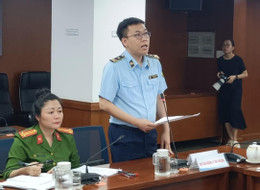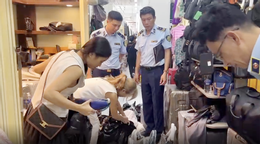Fake goods flood Saigon Square as buyers trade ethics for bargains
Nguyen Quang Huy, Deputy Head of the Ho Chi Minh City Market Surveillance Department, recently confirmed that Saigon Square remains a hotspot for counterfeit and untraceable goods.

In 2024 alone, including the first six months of the year, enforcement agencies handled 38 violations at Saigon Square involving the sale of counterfeit items bearing luxury brand labels such as Chanel, Louis Vuitton, Hermes, Montblanc, and Lacoste. Authorities confiscated 1,291 items, including watches, footwear, handbags, and clothing, with a total estimated value of over 10,000 USD. Total fines imposed amounted to around 14,000 USD.
According to the market surveillance agency, there are several reasons vendors at Saigon Square and other markets continue to deal in counterfeit products despite frequent inspections and penalties.
In many cases, consumers knowingly purchase fake goods because of their low price or to obtain brand-name designs they could not otherwise afford.
Moreover, fake goods are often bought at extremely low wholesale prices, allowing vendors to profit even when selling at a fraction of the cost of genuine items. This profit margin remains attractive enough for vendors to take the risk of being penalized.
Meanwhile, the current penalties remain insufficient as a deterrent. “Even though fines have been increased, many vendors treat them as just part of doing business. If their profits far exceed the fines, they are willing to violate the law,” Huy noted.

Addressing the difficulties in cracking down on counterfeit goods, officials noted that counterfeiting technology is becoming increasingly sophisticated. Fake products often closely resemble the originals and even come with packaging, labels, and QR codes, making them hard to distinguish by visual inspection alone.
This situation requires inspectors with high technical expertise and close coordination with intellectual property rights holders.
In addition, the rapid growth of e-commerce has complicated the counterfeit trade. Many sellers operate online with no fixed address and use fake accounts, making it difficult to track, verify, and penalize violators.
Officials also face resistance during on-site inspections. In notorious counterfeit hotspots, lookout personnel often alert sellers in advance.
“When authorities arrive, these individuals immediately notify businesses to shut down and avoid inspection,” Huy revealed.












